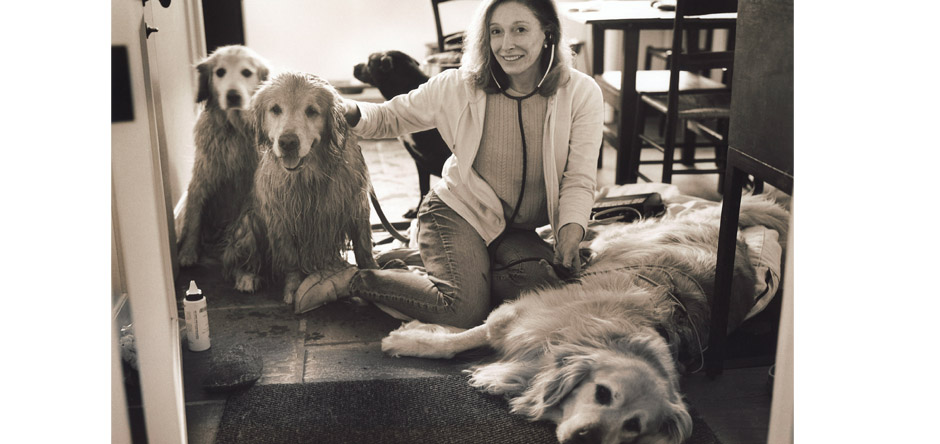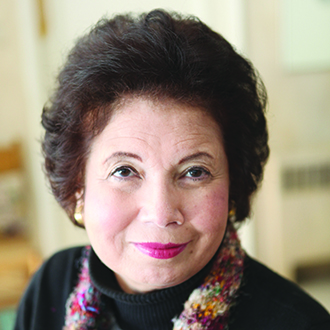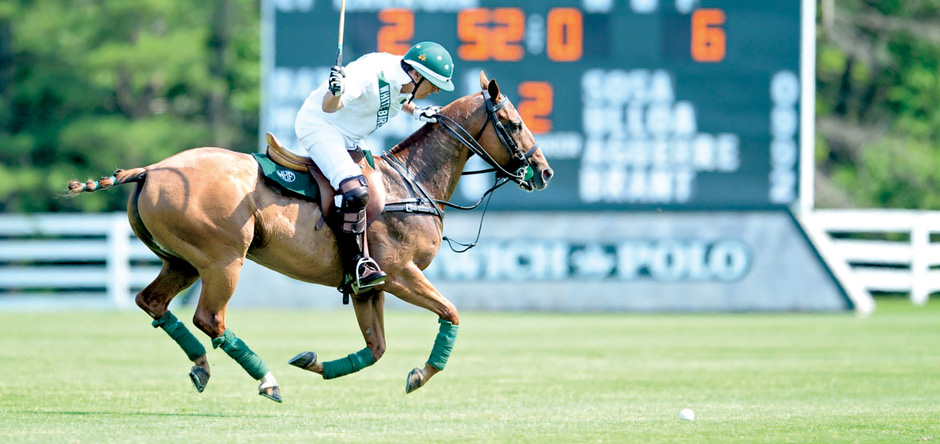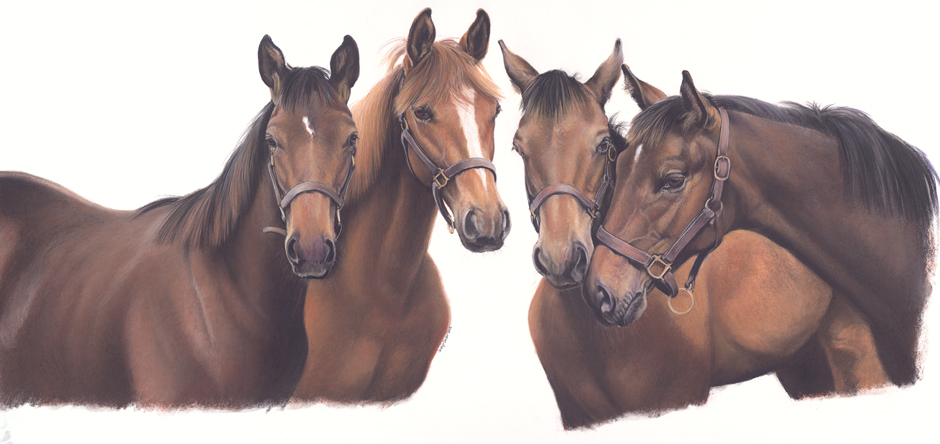All images courtesy of Dr. Babette Gladstein.
When a beloved pet is suffering from chronic pain, the owner suffers, too.
And when that pain is deep in the joints, seeing a formerly active and lively dog struggle to walk up and down steps, simply rise to his or her feet or get up on the couch to snuggle can be very distressing.
But Babette Gladstein offers hope for pets and their owners as a Manhattan-based veterinarian specializing in alternative and holistic treatments for dogs and horses that include acupuncture, ultrasound, chiropractic approaches, massage and laser therapy and prolotherapy.
“I am now doing a lot with prolotherapy in addition to the other treatment methods I use,” Gladstein says. “Prolotherapy is a recognized orthopedic procedure that is used in sports medicine for humans. It stimulates the body’s natural healing process to strengthen joints weakened by injury or arthritis.”
In prolotherapy, she adds, injections of a dextrose and lidocaine combination are used to thicken ligaments and tendons in the affected area. The thickening makes joints more stable and less painful once new tendon and muscle growth begins to take hold.
“It is a nonsurgical way to heal pets with chronic joint pain so they can once again lead active, pain-free lives. And because prolotherapy is noninvasive, there is no need for lengthy and painful physical rehabilitation.”
Gladstein has been using prolotherapy in her practice since 2006.
“It can be used for a variety of painful joint and tendon ailments, including arthritis, ligament injury, spinal stenosis, disc disease, chronic tendonitis, dysplasia, sprained joints and partially torn tendons anywhere in the animal’s body,” she says.
“I am very enthusiastic about prolotherapy, because it is really a cure. It can be used on dogs of all breeds and sizes, from tiny Poodles up to giant breeds like Newfoundlands and Mastiffs. Of course, I have to assess the animal to see if they can tolerate the ingredients used in prolotherapy. In the vast majority of cases, they can.”
Prolotherapy, she adds, usually yields quick results. “The ingredient lidocaine quells chronic pain receptors almost immediately. Treatments typically extend over five to six months and are given once a month. During the therapy, new collagen is forming to support and strengthen the affected area. It is an established therapy that is scientifically proven and offers tremendous advantages.”
Gladstein says that even older dogs with severe conditions like advanced hip dysplasia can see good results. “I would say that if you start treatment early enough, 90 percent of cases will show marked improvement.”
She advises all of her clients to make sure they keep their pets’ weight at the proper level.
“I cannot use prolotherapy on animals that are overweight,” she says. “And animals that have developed diabetes cannot take the dextrose that is part of the prolotherapy mixture.”
A different road
Eschewing the traditional approach to veterinary medicine, which often relies heavily on the use of drugs, Gladstein has also observed and studied the benefits of nutrition and nutritional supplements in animal care over the years. And she has followed this up with investigations into therapeutic ultrasound, massage and acupuncture, as well as physical therapy for dogs and horses.
She is highly trained in veterinary acupuncture, which in addition to relieving pain and muscle spasms, stimulates the immune system to promote healing.
Chiropractic therapy is also on the list of her specialties.
“Chiropractic therapy allows the animal to experience an immediate reduction in pain and increase its range of motion,” she says. “It can be used to relieve a variety of conditions, including muscle and joint injuries, lameness in the front legs, stiffness and back injuries.”
It’s not surprising that Gladstein would be interested in alternative medicine as this graduate of the University of Pennsylvania School of Veterinary Medicine, or PennVet, took an unusual path to that career. A native of New Jersey, she spent her early years working in the world of finance.
“I was a money manager and financial planner for many years,” she says. “I decided at a certain point to do something I had always wanted to do — care for and heal animals. I graduated from vet school in 2002 at the age of 51 and since then have maintained a practice that makes house calls exclusively.”
The vet did postdoctoral work in veterinary acupuncture at the American Academy of Veterinary Medical Acupuncture at Colorado State University as well as pre-veterinary studies at Hunter College in Manhattan.
“Now I am doing what I believe I was meant to do in life,” she says. “I have always had a passion for animals and now caring for them is very fulfilling.”
Gladstein is licensed to practice her profession in New York, New Jersey, Connecticut, Florida and California.
“Naturally, I spend most of my time making house calls in the New York metropolitan area,” she says. “In my areas of specialization, I find this works best for my clients and their pets. This is my true calling and I am very happy in what I do.”
For more information, contact Babette Gladstein at drbabette@animalacupuncture.net.





